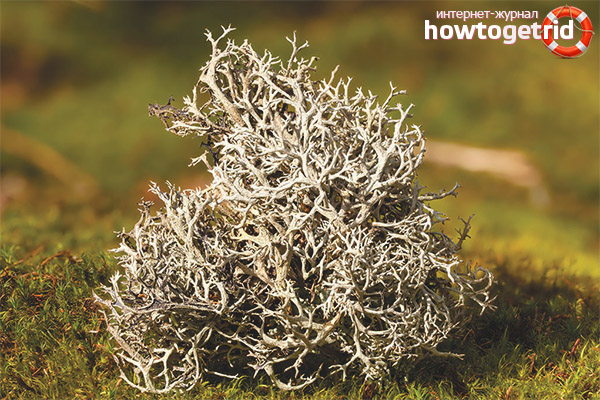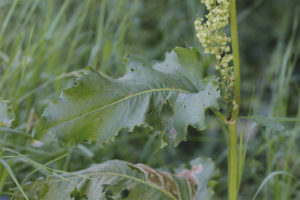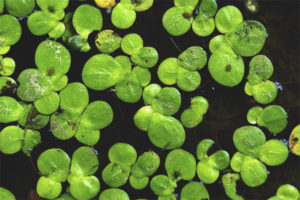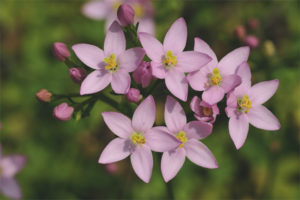The content of the article
Residents of the northern regions have long used Icelandic moss. This unusual-looking lichen in the official classification is designated by the term “Icelandic cetraria”, and the indigenous population calls it deer moss, lapade.
This representative of the meager flora of the European North has truly unique properties. For example, Eskimos and Lapps to this day add Icelandic moss as a spice to fish dishes. Based on it, beer is prepared and even used for baking bread. Due to the mucous consistency, cetraria has become an indispensable component for making jam and jelly. Lichen is the main food for deer. Therefore, farmers in Norway, Sweden and reindeer herders in the Russian Far North are engaged in its harvesting.
But the main advantage of Icelandic moss is its truly healing composition, which allows its wide use in the pharmaceutical industry.
Special composition
The full composition of this lichen has not yet been studied, because scientists and doctors continue to work in this direction. But the components that were used by the peoples living in the harsh conditions of the North to treat many diseases are not difficult to list. The thallus of Icelandic moss contains such valuable components:
- proteins;
- starch;
- a complex of carbohydrates, including glucose and galactose;
- bitterness;
- fats
- enzymes;
- minerals, including molybdenum, sodium, nickel;
- gum;
- vitamin groups - A, B;
- acids;
- mucus (it is the main component - up to 70%).
Icelandic moss has long been used by the pharmaceutical industry for the manufacture of various medicines that help in the treatment of a number of pathologies.
What pathologies does cetraria use for therapeutic purposes?
- tonic;
- anti-inflammatory;
- laxatives;
- expectorant;
- immunostimulating;
- emollient;
- choleretic;
- enveloping effect.
Experts highly appreciate the qualities of this representative of the plant world and consider Icelandic moss one of the most powerful natural antibiotics.
What diseases are treated with Icelandic moss?
In ancient times, cetraria was used as an antiemetic and expectorant. A thorough study of the composition and characteristics of each of its components helped expand the list of pathologies in which drugs based on this lichen make treatment as effective as possible.
- Respiratory and lung diseases - pleurisy, pneumonia, bronchitis, whooping cough.
- Infectious pathologies - tuberculosis.
- Viral diseases - flu, rhinovirus.
- Skin diseases - acne, trophic ulcers, furunculosis.
- Gastrointestinal disorders and diseases of the digestive system - gastritis, ulcers.
- Recommended Icelandic moss for those who want to lose weight.
Traditional medicine offers effective recipes using lichen to restore the body's immune forces after exhaustion caused by severe diseases and in the postoperative period. They treat sexual problems in the stronger sex, and traditional healers recommend using lichen to combat mastopathy for women.
Recently, active research has been conducted that will establish the capabilities of Icelandic moss in the treatment of oncology and HIV infection.
Of course, the possibilities of Icelandic moss are impressive, but nevertheless, it is better to use it after agreement with the doctor.
Possible adverse reactions and contraindications
Any medication should be treated with extreme caution, even if they have the most unique properties. This rule must always be remembered. After all, serious medicines are mainly prepared on the basis of natural ingredients. Therefore, the treatment of Icelandic moss in any form must be approached very responsibly. And in order to minimize the risk of possible complications, it is better to visit a doctor before starting treatment. There are few cases of negative consequences after treatment with cetraria, but there are restrictions on the use of drugs based on it. Among the contraindications are such conditions:
- exacerbation of bronchial asthma;
- fever when on a thermometer above 39;
- ulcerative colitis;
- aggravated gastritis;
- autoimmune pathologies;
- spastic constipation;
- increased bowel tone;
- cholecystitis, pancreatitis (in the acute stage).
You can not use this type of lichen for the treatment of infants (up to a year). For pregnant women and nursing mothers, the decision on the appropriateness of this type of treatment should be made only by a doctor.
Usually, treatment with Icelandic moss takes place without negative consequences. Only in rare cases, patients complain of a slight digestive upset and a feeling of discomfort in the liver.
Good to know! Preparations created on the basis of cetraria are intended for complex use. For mono therapy, they are not suitable. This point needs to be considered when it comes to the treatment of life-threatening conditions for a patient: cancer, tuberculosis.
Pharmacy preparations
In Russian pharmacies and in the CIS countries, several types of medicines containing Irish moss are available for purchase.
- Cough syrups: "Herbion" - a drug intended for the treatment of cough in children up to a year, as well as "Pectolvan" - for respiratory infections in young patients (up to 12 years old).
- Isla-Moos cough lozenges help patients of any age who have problems with the vocal cords, dry sore throats.
- Cream with a warming effect helps with bruises, joint pains, colds. In addition to the Icelandic lichen, it contains bear fat, eucalyptus, honey.
- Sodium Usninat powder can also be found in the pharmacy chain. This is an excellent external remedy that helps in the treatment of burns and other open wound surfaces. Also available in alcohol or oil solution.
- Many foreign cosmetology companies have mastered the production of gels, lotions and creams based on this lichen. In addition to the pharmacy network, Icelandic moss can also be purchased from herbalists and traditional healers.
Folk recipes
There are many home-made methods for preparing various dosage forms from this valuable natural product. But, like any other medicine, all drugs made on their own based on cetraria should be taken in a strictly defined dosage. Multiplicity of receptions also needs to be maintained.
- Cough tea for whooping cough. Components of moss and thyme.Both ingredients are taken in half a teaspoon, then the mixture is poured with boiling water (glass), infused for about 5 minutes. After straining, give the child a full glass of tea in small sips. Healing tea can be drunk up to three times a day.
- Therapeutic decoction of stomach ulcers. The same parts of the root of the marshmallow, cetraria, flaxseed mix. One and a half tablespoons of the herbal mixture pour boiling water (0.5 l), put on low heat for 5-7 minutes. Finish the broth thoroughly. After the treatment has cooled down, it can be taken 70 ml before each meal in about half an hour.
- The constipation extract is prepared in the following sequence: pour dry raw materials (100 g) with a liter of ordinary water and let it stand for a day. Then filter, cook in a water bath until the volume is reduced by half. Take three times before meals.
- An antiallergic decoction can be quickly prepared if you take a full handful of dry lichen, first fill the raw material with cold water and let it brew. After two hours, you can drain the water, and pour the grass mass in 0.5 l of boiling water. Boil the mixture for about 25 minutes over moderate heat. The broth is drunk on an empty stomach in half a glass.
- Universal broth is suitable for any occasion and its preparation does not take much time. Dry raw materials in the amount of one spoon (tablespoon) are poured first with boiling water, put for 5 minutes in a water bath. Once the solution has cooled, it must be well filtered. You can drink up to 5 times a spoon at a time.
The collection, which will help to cope with a chronic runny nose, consists of equal parts (1 l. Art.) Components:
- Icelandic moss
- St. John's wort
- Sophora Japanese.
The listed agents are mixed, sage (2 tbsp.) Is added to them, the mass is poured with boiling water, and then boiled for ½ hour. When the solution has cooled, it is filtered. Means for washing the sinuses is intended. It is better to perform the procedure before bedtime with a small syringe or a sterile syringe without a needle.
This is only a small part of the popular recipes that, as in ancient times, help people forget about diseases and restore strength. Icelandic moss is just one representative of the plant world, which has a lot of properties that are beneficial to human health. But only with reasonable use can he demonstrate his healing qualities. This must always be remembered.
Video: how to remove impurities and chop Icelandic moss










Submit